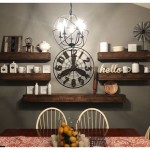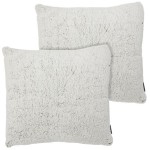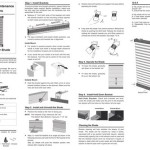Autism Home Decor: Creating Supportive and Sensory-Friendly Spaces
Designing a home for a neurodivergent individual, specifically someone with autism spectrum disorder (ASD), requires careful consideration of their unique sensory sensitivities and needs. Autism home decor goes beyond mere aesthetics; it focuses on creating a supportive environment that promotes comfort, reduces anxiety, and fosters a sense of security. This approach emphasizes functionality and sensory regulation, prioritizing the individual's well-being and enabling them to thrive within their living space.
Sensory Considerations in Lighting and Color
Individuals with autism can experience heightened sensitivities to light and color. Harsh overhead lighting, flickering fluorescent bulbs, and intensely saturated colors can be overwhelming and trigger sensory overload. Instead, opt for soft, natural lighting whenever possible. Incorporate dimmer switches to allow adjustable light levels throughout the day, catering to individual preferences. Consider using warm, neutral color palettes on walls and furniture, as these are generally more calming than vibrant or highly contrasting shades. Introduce color strategically through accessories and artwork, allowing for easy modification if needed.
Creating Organized and Predictable Spaces
A structured and predictable environment can significantly reduce anxiety for individuals with autism. Clear visual organization is crucial. Utilize labeled storage bins and shelves to designate spaces for specific items, making it easier to find and put away belongings. Establish clear zones for different activities, such as a designated quiet area for reading or a designated play area. Maintaining a consistent organization system minimizes unexpected changes and helps individuals feel more in control of their surroundings.
Designing Calming Sensory Zones
Incorporating dedicated sensory zones within the home offers valuable spaces for self-regulation and relaxation. A sensory room can be tailored to individual needs and preferences, incorporating elements like a comfortable beanbag chair, weighted blankets, soft textures, and calming lighting. Alternatively, smaller sensory corners can be created within existing rooms, utilizing items like a mini trampoline, a tactile wall, or a calming scent diffuser. These designated areas provide a safe haven for individuals to retreat to when feeling overwhelmed or in need of sensory input.
Choosing Furniture and Fabrics for Comfort and Safety
Furniture selection plays a critical role in creating a comfortable and safe environment. Opt for sturdy, durable pieces that can withstand repetitive movements or stimming behaviors. Avoid furniture with sharp edges or fragile components. Choose soft, comfortable fabrics for upholstery and bedding, considering tactile sensitivities. Individuals with autism may have specific texture preferences, so offering a variety of options and observing their responses can be helpful. Weighted blankets and lap pads can provide deep pressure input, which can be calming and promote a sense of security.
Minimizing Auditory Distractions
Sound sensitivity is a common characteristic of autism, so minimizing auditory distractions within the home is essential. Consider soundproofing techniques, such as using thick curtains or rugs to absorb noise. Strategic placement of furniture can also help to buffer sound. White noise machines or calming nature sounds can mask distracting background noises. Communicate with family members about maintaining a quiet environment during specific times, especially during periods of rest or focused activities.
Personalizing the Space for Individual Needs
Autism is a spectrum disorder, meaning each individual's needs and preferences are unique. There is no one-size-fits-all approach to autism home decor. The most effective approach involves close observation and communication with the individual. Involve them in the design process whenever possible, allowing them to choose colors, textures, and furniture that they find comforting and appealing. Regularly assess the effectiveness of the design choices and make adjustments as needed. Flexibility and adaptability are key to creating a truly supportive and personalized living space.
Maintaining a Consistent and Adaptable Environment
Consistency is crucial for individuals with autism. Once a comfortable and functional home environment is established, maintaining consistency is vital. While changes may be necessary at times, introduce them gradually and with clear communication. Prepare the individual for upcoming changes and provide visual aids or schedules to help them anticipate and adapt. This proactive approach can minimize anxiety and help maintain a sense of stability.
Collaborating with Therapists and Professionals
Creating an autism-friendly home can benefit from collaboration with occupational therapists, sensory specialists, or other professionals experienced in working with individuals with ASD. These professionals can offer valuable insights into specific sensory needs, suggest appropriate design modifications, and recommend helpful resources. Their expertise can contribute to creating a truly supportive and therapeutic living environment tailored to the individual's unique requirements.

Pin On Sensory Rooms

Autism Home Decor Awareness Sign Quote Appreciation

Autism Awareness In This House We Do Meltdowns Avoi Tears And Frustration Hh3007

Autism Puzzle Pumpkin House Flag Awareness

Round Wooden Autism Awareness Sign Signs For Room Decor Home Holiday Festivals Wall Indoor Outdoor Temu United Kingdom

Sensory Room Ideas For Children With Autism Pediaplex

In This House We Do Autism Tt1711

Autism In This House Poster Awareness Wall Art Home Decor Godoprint

8 034 X10 Set Of 3 Autism Poster Prints Awareness Home Decor Wall Art Print

Autism Always Unique Totally Interesting Sometimes Mysterious Auti Simply Remarkable
Related Posts







